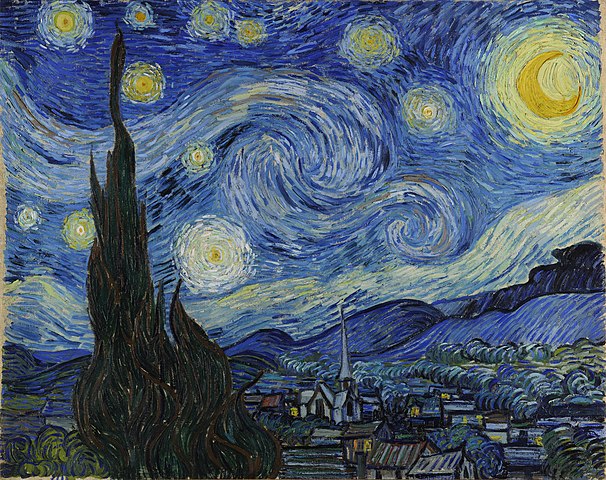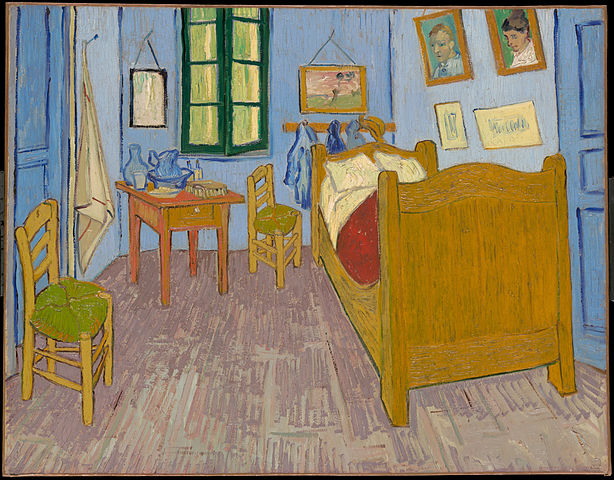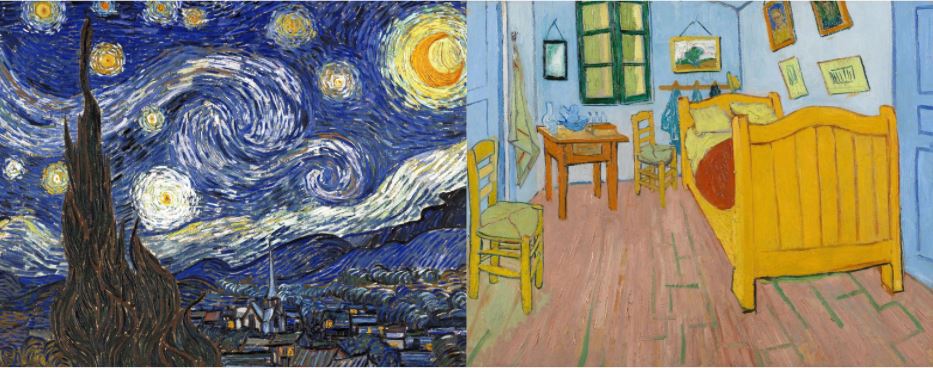An often debated topic in art is “was Van Gogh an Impressionist?” Van Gogh was a post-impressionist painter although his work did have some similarities to the impressionist style of painting.
Post-impressionism was a reaction to the impressionist movement that was so prevalent in the late 19th century.
Where the Impressionists sought to capture the essence of a scene through the use of soft colors to give form and structure to objects rather than distinctive lines, the post-impressionist used much brighter, often contrasting colors, and used pure black pigment.
The post-impressionist works were more expressive and symbolic and used a much more daring, non-natural palette of colors.
Was Van Gogh an Impressionist?
Van Gogh was a post-impressionist painter and not an impressionist, but, he did share some similarities and techniques with the impressionist artists.
He was initially influenced by Peter Paul Rubens whose early Dutch-style used a lot of darker tones and black, upon meeting the impressionists in Paris that changed and his palette evolved to use much lighter colors.
Early on he also adapted the impressionist brush technique of using short, sharp brush strokes.
Some of the main key points that distinguish Van Gogh’s paintings from the impressionists are discussed below:
Lighting
One of the key aspects of true impressionism is how the artists handled natural light.
Light and it’s relationship to color was very important, artists such as Monet would often paint the same scene many, many times to capture how light affected the subject matter at different times of the day and throughout the year in the different seasons.
Vincent Van Gogh did not seek to capture light in this way he focused more on color contrasts rather than the softer, more natural forms of light that the impressionist focused on.
Color
Van Gogh found the impressionist use of color far too restrictive and instead used color in a much more expressive way.
He used bold contrasting colors to give a very strong atmospheric effect to his subject matter, often transporting the viewer into a much more vibrant world where colors are exaggerated and celebrated.

The Starry Night above is a great example of how Van Gogh used bright colors to make the stars stand out off of the canvas.
An impressionist would not have tried to paint such an image as they rely on natural light although Monet would paint the dusk light in several of his works.
His series of Sunflowers paintings is a great example of Van Gogh not trying to capture the natural color of the object but instead to work with color of a more vibrant nature.
Brush Strokes
Another departure for Van Gogh from the impressionist is his use of long brush strokes. In impressionism, the brush strokes are mostly very short and thick with paint.
They would also use layers as a method to “build up a color” using such techniques as hatching and stippling.
Van Gogh on the other hand was happy to mix and blend colors straight onto the canvas and would use considerably fewer layers of paint and very few of the techniques mentioned above.
Use of Black
The post-impressionists were not afraid to use black as a color. Where the impressionists would mix other primary colors to make a black they never used pure black.
The use of pure black will almost always result in distinct lines or forms on a canvas, mixing colors to attain black results in considerably less separation between objects.
Van Gogh was not afraid to use black and when combined with bright contrasting colors it makes those colors ‘pop’ out from the canvas a technique that he used to great effect.
Distinct Lines
Impressionists rarely if ever used distinct lines to separate objects of shapes in their painting instead they would use wet into wet oil paint allowing objects to be separated by their color.

In Vincent Van Gogh’s painting, The Bedroom at Arles above there is a clear use of deliberate lines throughout.
Mixing Paint
Impressionists would never mix paint of different colors on their palette but Van Gogh would. He would also mix them on the canvas.
Impressionists relied on a variety of techniques that fall under the heading of Optical Mixing such as cross-hatching and stippling mentioned earlier. This allowed them to make almost unnoticeable transitions between objects.
It is clear from the above points that Van Gogh was not an impressionist but a post-impressionist painter.

